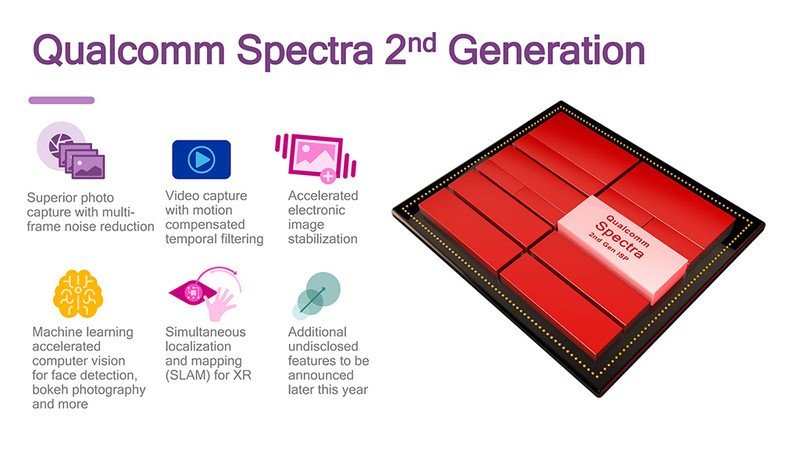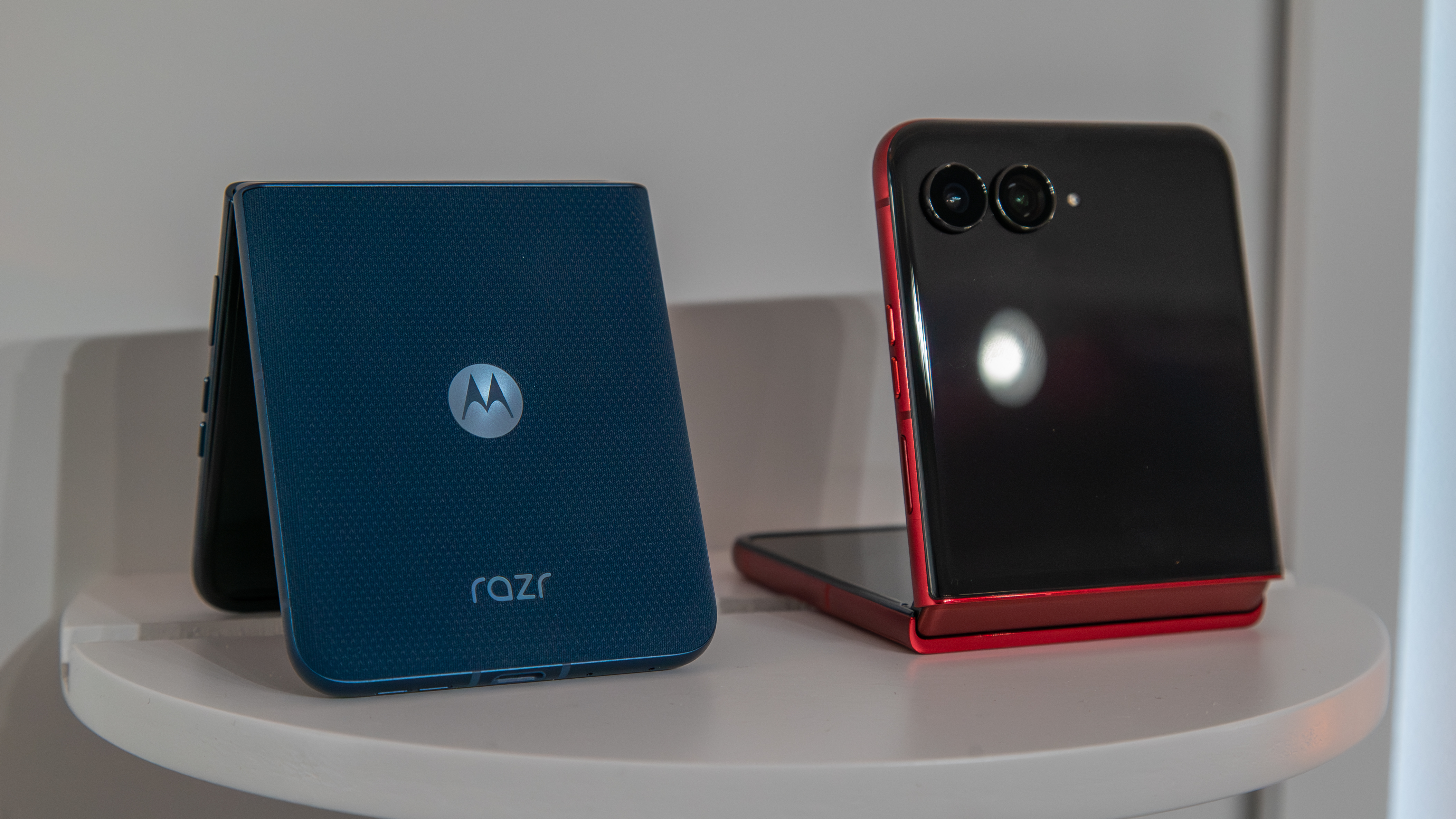Qualcomm announces new depth-sensing technology for Android cameras

Qualcomm introduced the Spectra ISP powered Clear Sight dual-camera system in 2016 with the promise of "astonishing results that mimic human vision." Today it is upping the ante with the second generation Spectra Module Program that brings 3D computer vision to Android products using the Qualcomm Snapdragon Platform.

That's the sort of news that gets futurists and engineers excited, but everyone benefits here, and not in a small way. What Qualcomm is promising amounts to a two-camera setup that can sense physical depth and motion in real time, using off-the-shelf parts. Manufacturers can use these products for AR and biometric security on phones, tablets, and stand-alone Head-Mounted displays like the coming LG and HTC Daydream models.
While our first instincts will be to compare this to Google's Tango product, which Qualcomm also supports through its optimized Snapdragon 835's ISP, we shouldn't make that leap. Where Tango uses specialized equipment complete with sensors and cameras specialized for specific AR applications, the new Spectra Modules are replacements for the existing camera hardware used on "regular" phones.
This new hardware will be able to bridge the gap between existing hardware and something more specialized like Google's Tango.
Using the new system on rear-mounted camera setups, apps can track motion and determine distance using the depth-sensing properties. Developers will be able to use this to create applications that incorporate alternate reality on a per-app level. And they should be able to take some really great photos, too.
When used in a front-facing camera, biometric security through Iris scanning or 3D facial recognition will be greatly increased. Collecting data and processing it in "real-time" bridges the gap between existing systems and the specialized Tango platform.
Qualcomm hasn't yet announced any partners who plan to incorporate the new Spectra Module system, but we imagine those will follow as companies develop and announce new products.
You can read the full press release below and find out more information at Qualcomm.com
Be an expert in 5 minutes
Get the latest news from Android Central, your trusted companion in the world of Android
Qualcomm First to Announce Depth-Sensing Camera Technology Designed For Android Ecosystem
— Unveils next-generation Qualcomm Spectra ISP for computer vision, extended reality and computational photography technologies—
SAN DIEGO — August 15, 2017 — Today Qualcomm Incorporated (NASDAQ:QCOM), through its subsidiary, Qualcomm Technologies Inc., announced an expansion to the Qualcomm® Spectra™ Module Program, capable of improved biometric authentication and high-resolution depth sensing, designed to meet growing demands of photo and video for a broad range of mobile devices and head mounted displays (HMD). This module program is built on the cutting-edge technology behind the Qualcomm® SpectraTM embedded image signal processors (ISP) family. Engineered by Qualcomm Technologies from the ground up, Qualcomm Spectra paves the way for future image quality and computer vision innovations in upcoming Qualcomm® SnapdragonTM Mobile Platforms.
"Whether used for computational photography, video recording, or for computer vision applications that require accurate motion tracking, it's clear that power efficient camera image signal processing has become more important for the next generation of mobile user experiences," said Tim Leland, vice president of product management, Qualcomm TechnologiesInc. "Our breakthrough advancements in visual quality and computer vision, combined with our family of integrated Spectra ISPs for Snapdragon, are designed to support an ecosystem of cutting edge mobile applications for our customers."
Together, the new ISPs and camera modules are engineered to support superior image quality and new computer vision use cases that utilize deep learning techniques and bokeh quality image experiences with a faster time to market for smartphone and HMD devices. The next-generation ISPs feature a new camera architecture designed for advancements in computer vision, image quality and power efficiency for the next Snapdragon mobile and VR platforms. The camera module program additions consist of a trio of camera modules, including an iris authentication module, a passive depth sensing module and an active depth sensing module.
Qualcomm Spectra Module Program
Launched last year, the Qualcomm Spectra Module Program was designed to help customers accelerate time to market for devices with stunning image quality and advanced camera technology. Last year's offerings provided customers with optimized, dual-camera module solutions that make it easy for manufacturers to produce smartphone cameras with improved low light photography and video recording with smooth zoom. Now, the camera module program is being expanded to include new camera modules capable of utilizing active sensing for superior biometric authentication, and structured light for a variety of computer vision applications that require real-time, dense depth map generation and segmentation.
Second-generation Qualcomm Spectra ISP
The second-generation Qualcomm Spectra ISP is the next family of integrated ISPs that utilizes new hardware and software architecture designed specifically for advancements in computer vision, image quality, and power efficiency in future Snapdragon platforms. It features multiframe noise reduction for superior photographic quality, along with hardware-accelerated motion compensated temporal filtering (MCTF), and inline electronic image stabilization (EIS) for superior camcorder-like video quality.
The low-power, high-performance motion tracking capabilities of the Qualcomm Spectra ISP, in addition to optimized simultaneous localization and mapping (SLAM) algorithms, are designed to support new extended reality (XR) use cases for virtual and augmented reality applications that require SLAM.
The Qualcomm Spectra family of ISPs and new Qualcomm Spectra camera modules are expected to be part of the next flagship Snapdragon Mobile Platform.
About Qualcomm
Qualcomm's technologies powered the smartphone revolution and connected billions of people. We pioneered 3G and 4G – and now we are leading the way to 5G and a new era of intelligent, connected devices. Our products are revolutionizing industries, including automotive, computing, IoT, healthcare and data center, and are allowing millions of devices to connect with each other in ways never before imagined. Qualcomm Incorporated includes our licensing business, QTL, and the vast majority of our patent portfolio. Qualcomm Technologies, Inc., a subsidiary of Qualcomm Incorporated, operates, along with its subsidiaries, all of our engineering, research and development functions, and all of our products and services businesses, including, our QCT semiconductor business. For more information, visit Qualcomm's website, OnQ blog, Twitter and Facebook pages.

Jerry is an amateur woodworker and struggling shade tree mechanic. There's nothing he can't take apart, but many things he can't reassemble. You'll find him writing and speaking his loud opinion on Android Central and occasionally on Threads.
